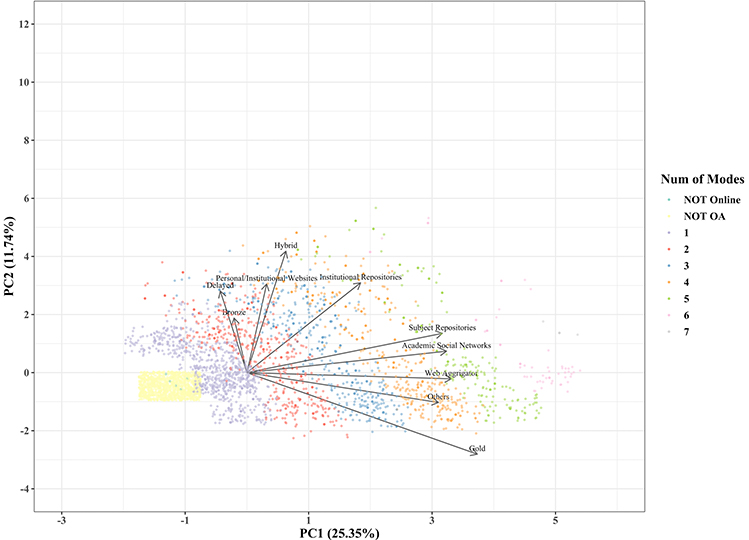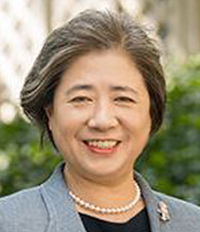Digitally based open access publishing has revolutionized scholarly communication. Research by Keio University's Keiko Kurata offers deep insights into the evolution of open access publishing over time.

Evolution of scholarly communication
"I am studying the role of scholarly communication in the process of creating knowledge," says Keiko Kurata, a professor at the Faculty of Letters, Department of Library and Information Science, Keio University. "I am especially interested in the recent trends in open access publishing and open science. Methods for sharing scholarly knowledge have changed dramatically since the philosophically based approach of academic journals of the 17th century gave way to the for-profit commercial mega-publishing models of the 21st century. It's a rapidly changing landscape."
Kurata stresses the importance of the cycle of gathering information on the current understanding of a topic, and sharing results with peers and society. "This cycle is critical to create knowledge for the advancement of the human endeavour to understand the world."
During the first half of the 20th century, academic societies were the main publishers of scholarly journals, and played a central role in disseminating new scholarly findings. However, the latter half of the 20th century saw the rise commercial publishing companies with new business models, triggered by the rise of unprecedented global investment in research as part of worldwide national initiatives. Major commercial publishers replaced traditional academic society publishing organizations that were unable to cope with the huge demand for publishing primary research articles, and scholarly publishing became a highly lucrative business.
"Big Deal" subscriptions and the birth of open access
Kurata explains that the collision between the need to share research findings by scholars and the business models developed by commercial publishers led to major issues for university libraries. The foremost being the huge costs of subscribing to packages of journals, with a growing number of universities unable to afford the subscription costs.
The proliferation of the internet and digitalization led to extensive mergers and acquisitions amongst publishing companies with the rise of a handful of mega commercial publishers that now control the publication of the majority of academic electronic journals.
"Digital publishing led to 'Big Deal' models which are contracts for bundled access to a large commercial publishers' entire journals aimed at academic libraries," explains Kurata. "The costs of subscribing to only a small selection of journals are too high and not realistic for most libraries. Scholarly communication is dysfunctional."
In contrast to the dysfunctional state of scholarly communication represented by the Big Deal model is open access (OA) publishing, where authors pay an article publishing charge (APC) to publish their research articles. OA publishing allows authors to own their research through a variety of copyright agreements. But OA is expensive, with APCs ranging from several hundred to thousands of dollars, depending on the journal. High APCs have created another conundrum for researchers, namely, finding funding to pay these costs.
Survey of the status of open access publishing
For twenty years, the open access concept has been transforming scholarly publishing. OA―as originally defined by the Budapest Open Access Initiative in 2002―refers to scientific publications being freely available on the internet, enabling anyone to access, read, and download them. Over the years, different implementations of OA have emerged ― partly because commercial publishers have developed various business models to cover the cost of publishing OA articles.
Kurata and colleagues looked in detail at the trends in OA publishing [1]. They identified different types of OA implementation, and, by looking at sets of OA articles published 5 years apart, were able to analyse how OA implementation had evolved over that time period.
From a study of the literature on OA, the researchers identified 10 types of OA publishing, including so-called Gold (when a publication is immediately and freely available) and Hybrid (when the publication is immediately and freely available at an otherwise subscription-based journal's website). They then randomly selected the records of 2,368 articles published in 2013 and 2,999 articles published in 2018 ― these data were purchased from Web of Science, a paid-for platform providing access to several databases containing reference and citation data from academic journals. All these records were then searched via Google Scholar and Google, and based on the outcomes of these searches, the articles were then assigned one or more modes of OA implementation. (For their analysis, the researchers used the accessibility status of the sampled articles in 2015 and 2020, respectively.)
One of the main findings of the study of Kurata and colleagues is that the overall percentage of freely available articles went up from 56.5 % in 2015 to 61.8% in 2020, with academic social networks (ASNs), such as ResearchGate, being the most common OA mode. (ASNs are somewhat controversial as they do not necessarily comply with copyright policies ― some scholars even do not consider ASNs as a proper mode of OA.) Another trend is an increased proportion of Gold OA (from 24.1% in 2015 to 37.4% in 2020).
The researchers also carried out a principal component analysis of their data ― a statistical method often used to increase the interpretability of data. It enables us to visualize the data as a 2D cluster of points with a roughly elliptic shape, the main axes of which are called the principal components. The latter often have a clear meaning, making it possible to identify trends. Kurata and colleagues found that the first principal component is an axis showing the number of overlapping OA implementation modes. Indeed, a publication often qualifies for several modes of OA implementation. Furthermore, the same combinations of overlapping OA implementation modes occur regularly.
The study of Kurata and colleagues captures the current state of the OA landscape. Naturally, changes are to be expected ― some OA implementation forms will perhaps no longer be used, and new types may emerge in the future. The scholars conclude that "... detailed surveys such as ours should be regularly conducted to define the characteristics of OA progress and discern changes in its development."

Fig. 4 from the paper1
Principal component score plot of 2020 open access data.
(https://doi.org/10.1371/journal.pone.0271215.g004)
On the horizon: Open science
Kurata is also involved in the development of an open science platform at Keio University. "Open science means sharing experimental data, methodology such as software programs, and even the initial ideas that lead to papers," explains Kurata. "Data has no copyright. I am confident that sharing data will promote interdisciplinary research and alternative applications of data. Again, this will lead to the creation of knowledge. This is the ultimate goal of scholarly communication."
Published online 3 March 2023
About the researcher

Keiko Kurata ― Professor
Faculty of Letters, Department of Humanities and Social Science (Library and Information Science)
Keiko Kurata is a professor at the Department of Library and
Information Science at Keio University, Japan. Her research interest is
in the ecosystem of scholarly communication in the digital age.
Her research project with funding from The Japan Society for the Promotion
of Science has investigated the current situation of the open access
movement and the sharing and reuse of research data. Her monograph
The System of Scholarly Communication and Open Access
(Keiso Shobo Publishing) received the Best Work
of the Year award from the Japan Society of Library and Information Science.
Links
Reference
- Kurata, K. et al. Monitoring the transition to open access through its mode of implementation: A principal component analysis of two surveys. PLoS One 17, e0271215 (2022). | article